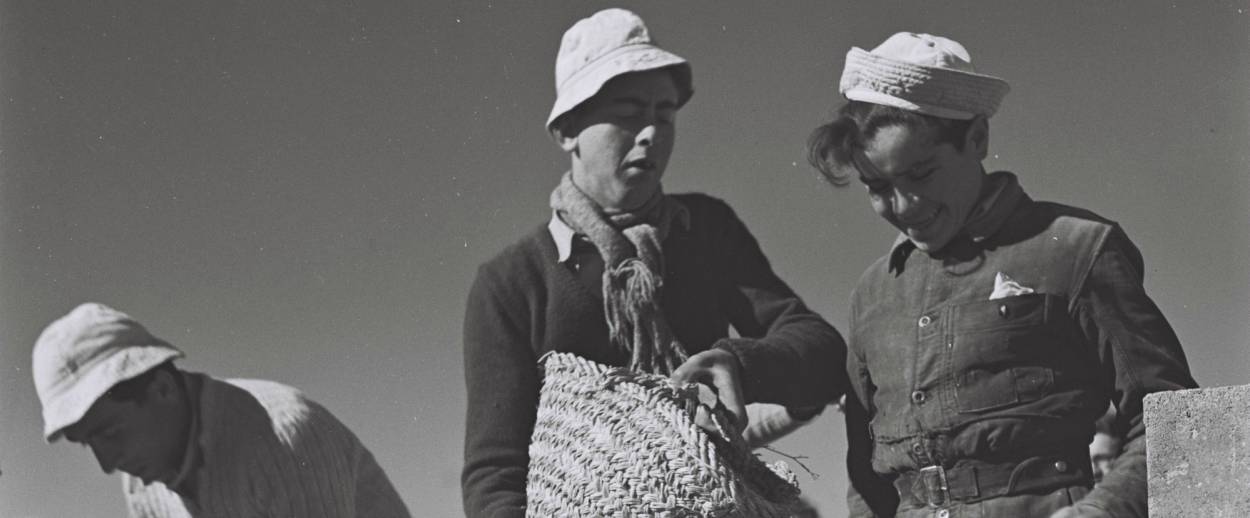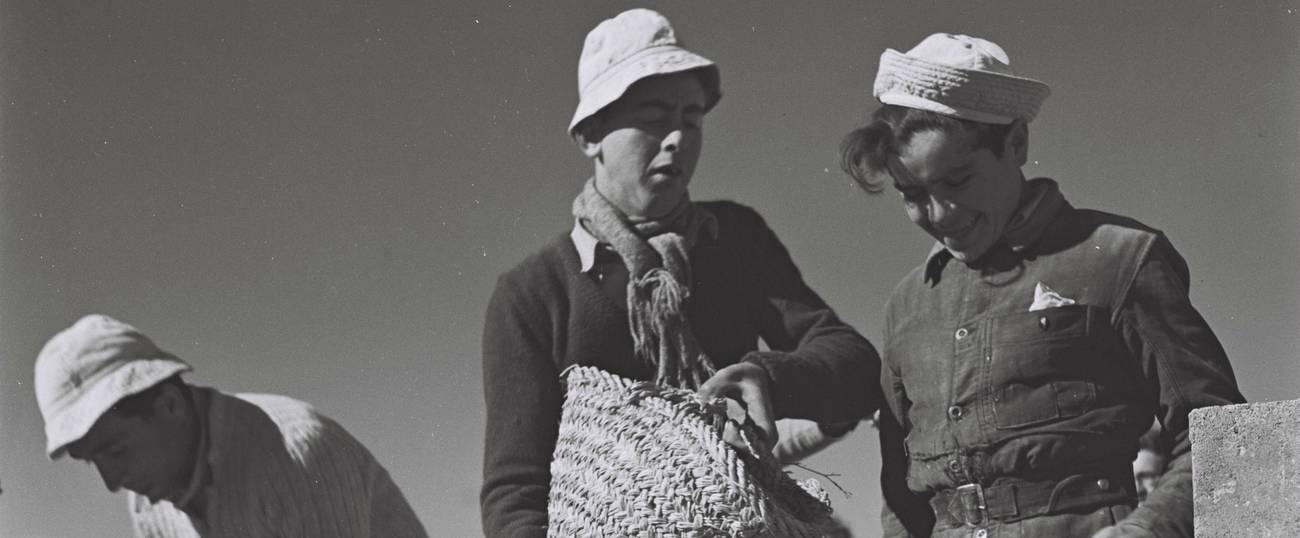Fashion’s Newest Must-Have Accessory? That Goofy Old Israeli Hat.
The Kova Tembel is having a moment




Fashion week has just ended in NYC, and one of the unexpected runway trends turned out to be bucket hats. Designers showed them along with girlie renditions of classic khaki workwear, along with Hawaiian print pants (?) and floor-sweeping evening gowns (??). Of course if you’re a gardener or freak about sun protection, the bucket hat was never out. But among the chic, it left the building many years ago, superceded by Kangols, crocheted beanies, trucker hats, fedoras (that universal symbol of douchitude) and neurasthenically floppy knit hats.
It’s never entirely clear why suddenly everyone in fashion suddenly pivots and shrieks about a thing, like the flock of demented MINE! MINE! MINE! seagulls in Finding Nemo. But all at once consumers are confronted with reams of millennial pink, and can rest easy in the knowledge that 2018 will be all about the puffed shoulder. I love the theories as to why: Millennial pink is a new, less-sweet-and-innocent rendition of a color associated with womanhood, symbolizing a new kind of young feminism that embraces both classic female identifiers and edgy, politically savvy modernity. Sure! The puffed shoulder, similarly, is simultaneously about strength (that linebacker silhouette!) and delicacy (the tulle! the lace!). OK!
So I’m gonna pontificate out my butt and say that the rise of the bucket hat is connected to the revival of the kova tembel. In a well-researched and entertaining piece for Israel21c, journalist Rachel Neiman notes that the hat that once symbolized making the desert bloom and the beginnings of the Israeli state–and then became incredibly dorky and touristy–is flowering on the heads of trendmakers once again.
The beginnings of its renaissance as a cool-person item can be traced to 2011, when the Eretz Israel Museum in Tel Aviv presented “Factory, Fashion and Dream,” a show about clothing manufactured by ATA, the original kova–tembel-maker and producer of a zillion items of workwear and uniforms, starting in 1933. The name ATA, via novelist S.Y. Agnon, stood for Arigei Totzeret Artzeinu, “fabric produced in our land.” Like a practical yet identity-shouting hat itself, ATA offered both a socialist and Zionist aesthetic. The company stayed in business through 1985, by which time it had begun to be associated with soldiers and the working class; bougie Israelis preferred not to be associated with something so utilitarian and uniform-esque.
But the museum show made Israelis look back at ATA with a bit of fondness. A business dude, Shahar Segal, sensing an opportunity, hired an actual fashion designer, Yael Shenberger, to revive the label. So ATA is back, baby, working a whole minimalist worker chic vibe. Fashion historian Ya’ara Keydar (who we’ve written about before in Tablet) urged curators at the Museum of Modern Art to include the kova tembel in its forthcoming exhibition, “Items: Is Fashion Modern?” and they did. The cap will take its place alongside 110 other iconic items including the little black dress, Levi’s 501s, the striped Breton fisherman shirt, Doc Martens, the Diane von Furstenberg wrap dress, Spanx, and the keffiyeh.
Of course, nothing happens in a vacuum. Millennial pink may have taken off because it seemed fresh and new for reasons most of us couldn’t articulate, but it was also–not coincidentally–awfully close to the 2016 Pantone Color of the Year, which influences the fabrics a ton of designers use. So it shouldn’t be surprising that the kova tembel revival is influenced by serious money pimping the ATA brand. (And perhaps it’s ironic that the label that once represented socialism is now all about capitalism.) But I’d argue that in our current political climate, the kova tembel feels both appealing and correct. It ties into our interest in environmentalism, with its whole “working the land” schtick. It represents a more unsullied, less morally exhausted phase of Israel’s life as a country. It identifies with the worker rather than the exploiter. It shrugs at sophistication even as it rests on the heads of of-the-moment sophisticates. In America, the bucket hat has late-‘80s-early-‘90s hip-hop associations, thanks to its presence on the heads of LL Cool Jay, Jam Master Jay and Rakim. In Israel, the iconic piece is the equivalent of Captain America’s shield: Patriotic and square, without being jingoistic. Or so I hope.
Marjorie Ingall is a former columnist for Tablet, the author of Mamaleh Knows Best, and a frequent contributor to the New York Times Book Review.